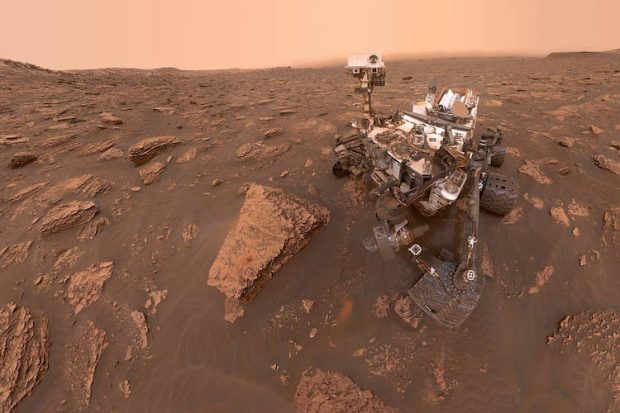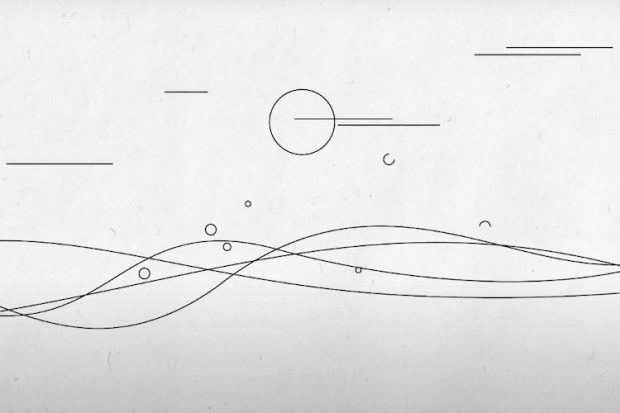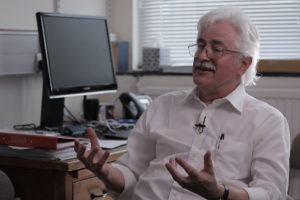Nonlinear Dynamics in Electrochemical Systems
MIT Prof. Martin Z. Bazant on electrical double layer, electroosmotic flow, and deionization shock
So, it’s now 50 years ago since Sputnik has opened the Space Age. And currently we are in a very exciting phase. Because, on one side, we have interplanetary mission expanding our knowledge about the Universe a lot, like Rosetta, like Huygens. And we have the area of small satellites opening the world for a paradigm change to have commercial small satellites established by small teams. So, it’s changing the whole are of space exploration.
I want to address sister-field topics today. My background was in space industry, so I had the opportunity and privilege to work on big interplanetary mission in the realization in space industry.
I worked on Huygens which went down to the Saturnian largest moon – Titan, which is a very interesting spot, because there you have organic molecules.
So, the story starts with the Voyager spacecraft which flew by in three thousand kilometer distance and should have explored the atmosphere but couldn’t penetrate it, because the atmosphere was more thick than they had expected. The instrumentation on board could not penetrate it, but they could detect the upper lawyers and it included hydrocarbons. These are the ingredients of organic chemistry, so these are the precursors of life. And it quickly became top priority on the list of scientists to go there to explore this exciting atmosphere of a moon and a moon very far away from Sun.
What was expected there was some pristine soup of life in this very remote place. It originated this joint ISA and NASA mission Cassini-Huygens. The Cassini spacecraft is still in orbit around the Saturn and provides exciting images about this remote world. And Huygens was actually the first entry mission that we had designed in Europe. Russia, United States did entry missions here on Earth. It’s easier – we know our Earth’s atmosphere pretty well from ground observations. With Titan we had no idea, only the upper lawyers were explored, and nevertheless, the spacecraft had to descend to the surface. And it was essential to have adaptive control algorithms to control autonomously the descent to the surface. It was complicated, because the spacecraft acted as a relay and was flying by, while the descent of the small spacecraft Huygens to the surface happened. And the fly-by spacecraft acts as a relay link for the data, for the transmission to Earth. All this had to be handled autonomously, because the distance is so large that the radio communication takes about one hour to reach the Earth, so remote control is impossible.
So, one interesting application of autonomous reaction capabilities happened in 2005, 14th of January, and it worked very well. So, it [Huygens] landed like predicted with a small deviation of five minutes. It was a very nice example of learning in space, while you do parallel performing of a mission, to detect this material analysis of the atmospheric components, of the organic chemistry going on on Titan. And this provides very interesting links to the origin of life here on Earth, because what we have now is very advanced. What we have on Titan is what was maybe four million years ago on Earth. It looks back into history.
Another very interesting and challenging mission is Rosetta. You might have seen in 2014 in November a small spacecraft landing on a comet, and Rosetta is a big spacecraft which accompanies the comet even today.
So, comets are one hypothesis to explain the huge amount of water we have on Earth, and comets also include organic chemistry materials. One hypothesis from science was that comets are responsible for the water on Earth and were also precursor building blocks for life.
This was the background to send a spacecraft to a comet, and it was composed of two components: Rosetta – the main spacecraft, doing the remote observation of the comet, doing long term observation, and the small spacecraft called Philae to land actually on the comet. This was a mission which I was accompanying for about 25 years now. So it was a very long duration to implement this spacecraft this took about twelve years, the transfer from Earth towards the comet took another twelve years. So altogether with interruptions and political issues, technical issues it took about 25 years.
Now it happened very well and it has very exciting results. Here autonomy plays a key role. Autonomous reaction was necessary because the signal propagation delay from the comet to Earth is about half an hour, it’s about five hundred million kilometer distance. And radio signals, despite the huge velocity of light, require about half an hour. So, Rosetta has to chase the comet, has to approach rendezvous, and this happened in the spring of 2014. It was quite a challenging topic. And in November 2014 the landing occurred. So there was time to observe the comet, to understand the dynamics, to do a smart approach.

And Rosetta delivered the Philae lander completely passive. From a distance of twelve kilometers it deployed the lander, and the lander in seven hours went to the surface. A comet is like a big mountain, so it’s a mass that causes gravity, one divided by hundred thousand the mass of the Earth gives you the gravity of a comet. And it’s completely dark, so if it’s far out, you need a lot of computer processing of contrast enhancement to really see images.
The autonomous descent was a very challenging issue and the gravity was very low, so a lot of disturbance influences act. Also here the autonomous reaction was inherent, and as it happened finally it was even more exciting, because the Philae lander was targeted to a very smooth terrain. And, nevertheless, it decided to do it differently. All the technical means to fix it on the surface failed, so the lander went down and bounced back. It did that jump of a one kilometer altitude and bumped twice before it settled in a cliff. So from the soft surface area, where a lot of dust was, it bounced and ended in a very interesting spot. Nobody have thought to land there, but it worked and it worked very well, so now we get a lot of interesting materials from a riff on the comet.
Also here autonomy played a key role, and what we are trying [to find out] now in current research aspects is how to autonomously coordinate several spacecrafts in orbit. A traditional multifunctional spacecraft performs in parallel many instrument measurements. But we want to realize our distributed spacecraft within the same budget frame. So, instead of one ton spacecraft you can place many small spacecrafts at one kilogram of mass. And that’s the basic idea to use miniaturization technology we have today to have advanced data processing on board or microprocessors, that are very capable today.The software on board coordinates multiple spacecrafts which are weak, but in coordination they really do a strong performance.
So, it’s a paradigm shift in the design of spacecrafts. It will not change everything, we will have big spacecrafts for challenging tasks, but they can be complemented by distributed small spacecrafts, and this will increase performance dramatically.
So here in Skoltech there are teams working on this around Alessandro Golkar, and we are cooperating on this in order to realize such distributed spacecrafts systems.
Also here autonomy plays a key role. Satellites in the Earth’s orbit typically take about hundred minutes. About ninety percent of the time they are on their own. Only for ten minutes they have contact to the ground station in average. So, ninety percent of time they have to interact autonomously, they have to cooperate, keep distances at appropriate level, avoid collisions, things like that. This needs to be done autonomously, because you only have a very short duration of time of contact to the ground station. Of course, you take advantage of this contact as much as possible, but you need autonomous reaction capabilities for the rest of the time when you fly in a formation.

And this offers a lot of application opportunities: in telecommunication, in Earth observation. If you have a joined observation of the same surface spot from different directions, you can reconstruct three dimensional images. So this offers a lot of application opportunities but it requires coordinated efforts in space. The spacecrafts have to talk to each other, so you have a communication link, you have controls in a distributed way via the communication link to have a meaningful coordination. And this is currently a very exciting scientific area – how to do control via communication links, because controls are packet oriented, are digitized, while control usually has a continuous flow of information, has at least fix sampling intervals.
And this needs coordination and it’s really challenging scientific research in control technology, in communication technology and the realization is happening in the satellite formations, in fragmented space graphs. And that’s a new approach to achieve very interesting new results. It includes also a lot of technology challenges we have to face in academia, but the benefit would be improved observation capabilities, distributed observations. And this opens the door to a lot of new exciting research results.

MIT Prof. Martin Z. Bazant on electrical double layer, electroosmotic flow, and deionization shock

Physicist David Southwood on the origin of Saturn’s rings, the length of the day on Saturn and why the magneti...

Physicist Jonathan Butterworth on the collisions of particles, the Large Hadron Collider detectors, and how to...